Originally Published in the Los Angeles Times
Kate Morrissey - April 10, 2021
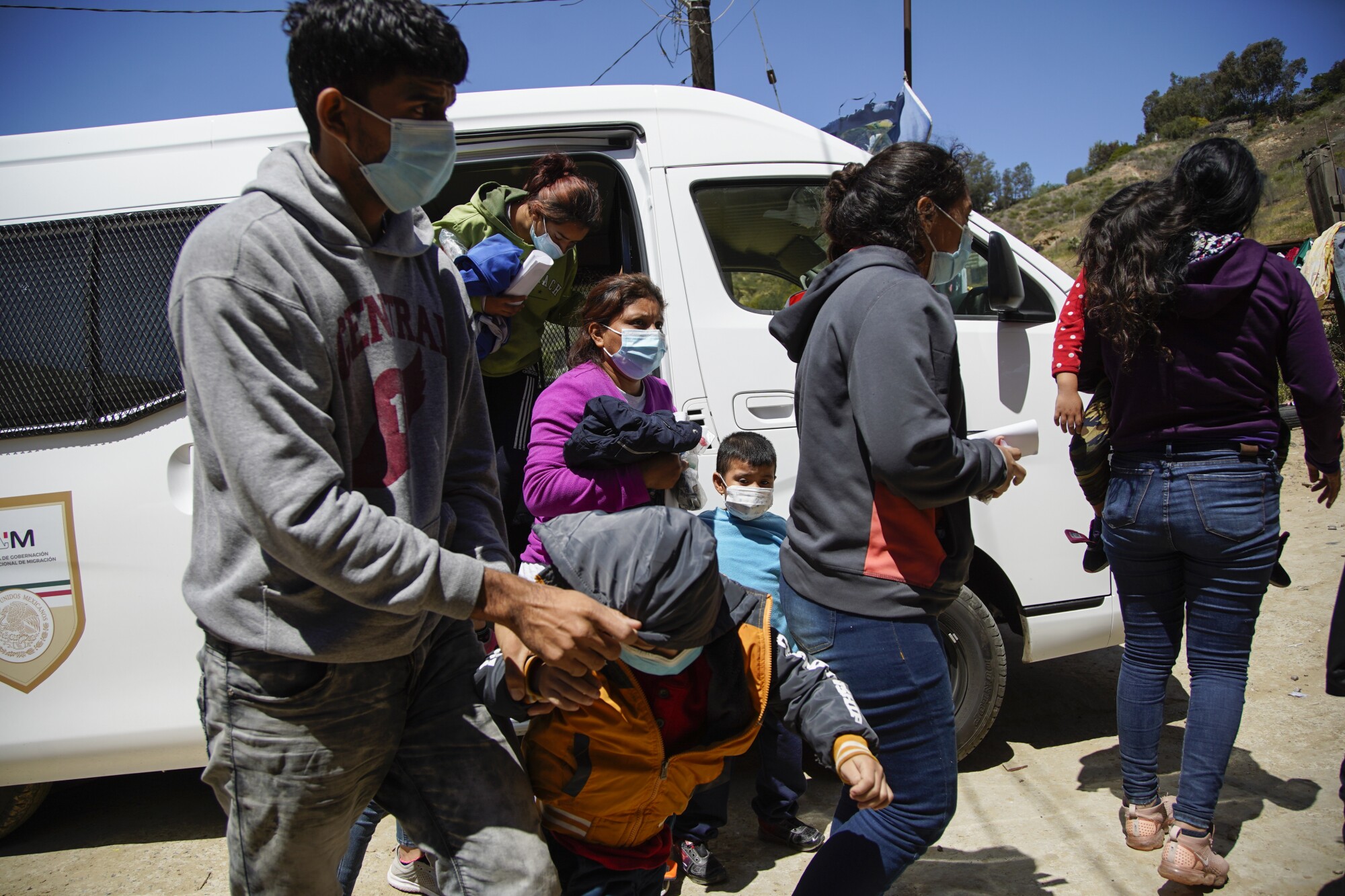
The Biden administration has flown roughly 2,000 asylum seekers — all families with children — from Texas to San Diego and expelled them from the United States to Mexico without giving them a chance to request protection.
Tijuana has been receiving on average about 100 expelled people a day from the flights, according to the Mexican Consulate in San Diego. Mexican immigration officials generally transport the families to migrant shelters. The primary shelter is currently filled with hundreds of parents and children.
The flights, which have not received much attention since they started in mid-March, mirror strategies used by President Biden’s predecessor, former President Trump, to try to deter people from coming by putting those who do come in difficult situations in Mexico.
Biden criticized Trump’s “Remain in Mexico” program that required asylum seekers to wait in border cities like Tijuana while their cases were heard in U.S. immigration court, and his administration has actively worked to wind it down. Asylum seekers in the program reported being kidnapped and assaulted while waiting in northern Mexico, where migrants are often seen as vulnerable targets for cartels and other criminal organizations.
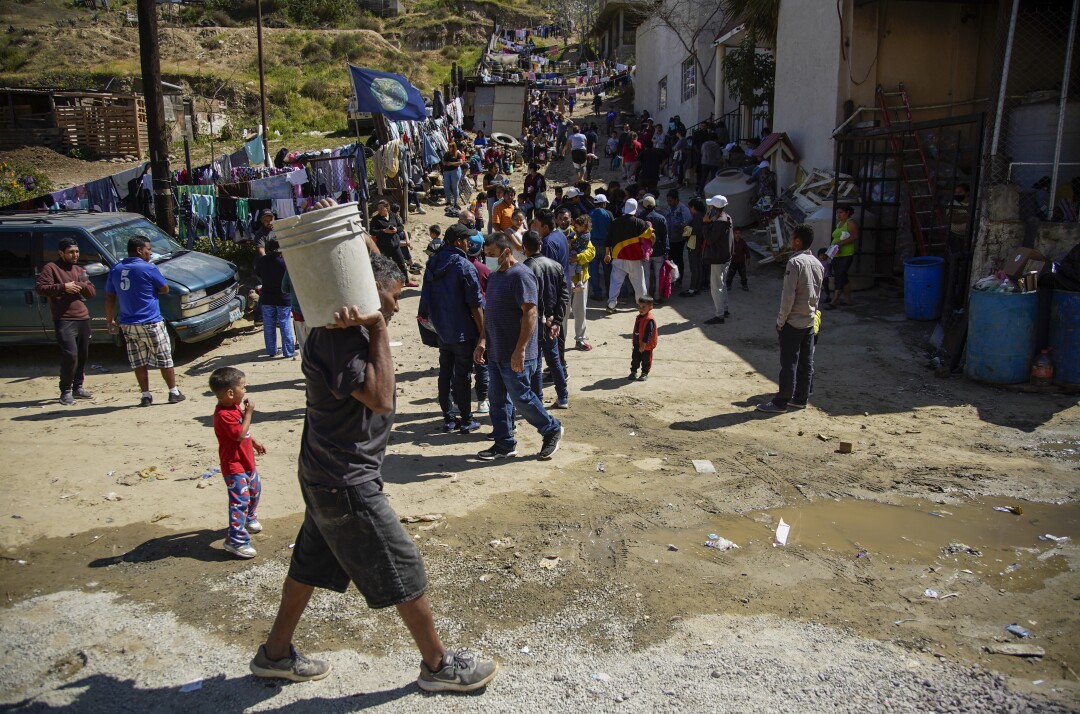
The Biden administration has flown roughly 2,000 asylum seekers — all families with children — from Texas to San Diego in order to expel them from the United States to Mexico without giving them a chance to request protection.
But the expulsion policy, which began under Trump during the pandemic and is known widely as Title 42, puts Central American asylum seekers in the same places that Remain in Mexico did, though without any access to request protection in the United States. There are no court hearings and no official steps that expelled migrants can take to begin the asylum screening process.
Both the Trump and the Biden administrations have said the Title 42 expulsions are necessary to minimize the amount of time that people spend in Border Patrol holding cells during the pandemic.
The Biden administration has taken the additional step of flying some families to San Diego in order to expel them to a city they do not know that is hundreds of miles from where they crossed into the United States. That is in response to increased crossings, particularly in South Texas, where the corresponding Mexican state of Tamaulipas has refused to accept some families back, especially if they have young children.
The White House deferred to the Department of Homeland Security when asked to comment on the flights. The DHS did not respond to a request for comment.
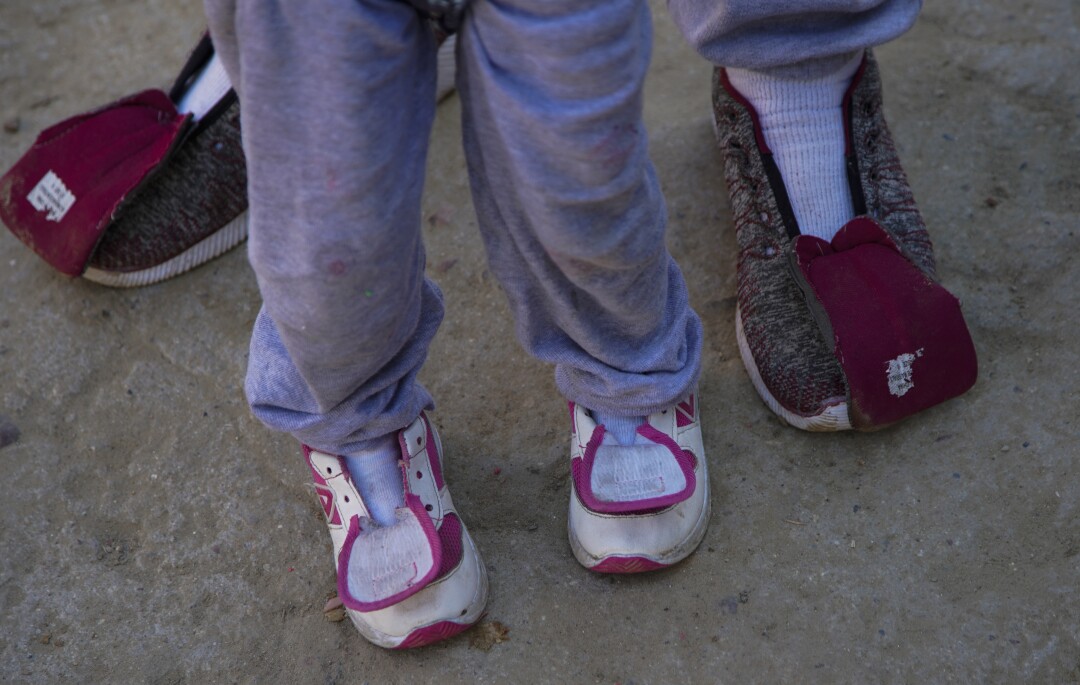
Some families that cross in that part of Texas are being released to loved ones in the United States because of the Tamaulipas policy. As word has spread that some have been able to stay in the U.S. after arriving there, crossings have increased in the Rio Grande Valley region, which was already historically a common crossing place.
The number of family members caught by the Border Patrol last month, nearly 53,000, is just under the number apprehended in March 2019, according to data from Customs and Border Protection analyzed by the San Diego Union-Tribune. More than half of the parents and children caught by the Border Patrol so far this fiscal year crossed in the Rio Grande Valley sector, which is responsible for roughly 15% of the U.S.-Mexico border.
The overall number of apprehensions at the border was at a 20-year high for monthly arrivals in March, mostly because of an increase in single adults crossing, often multiple times. The number of unaccompanied children apprehended along the border was also the highest monthly total since CBP began tracking child crossings in fiscal 2010.
Just 2% of families caught crossing into the U.S. in March were apprehended by San Diego Border Patrol agents, so they are receiving busloads of migrants from Arizona and flights from Texas for processing. While asylum seekers on the buses from Arizona generally appear to be released into the United States, many on the flights end up being expelled.
“The border is not open and CBP is still operating under Centers for Disease Control guidelines for the COVID-19 pandemic,” said Jeffery Stephenson, an agent and spokesman with the San Diego Border Patrol sector. “CBP is making every effort to remain within CDC guidelines and mitigate long periods of processing and holding to minimize potential exposure to our workforce, those in custody, and the community. Once processing is complete, these individuals will be expeditiously transferred out of CBP custody.”
On Thursday morning, after a charter plane from Brownsville landed at San Diego International Airport, many parents and children were observed walking down the stairs and boarding three waiting white buses.
One bus drove straight to the border. The other two appeared to exit for the Chula Vista Border Patrol station.
Many of the expelled families ended up at Templo Embajadores de Jesus, a shelter at a church in a canyon in Tijuana once known for housing Haitian migrants. Mexican immigration officials bring them to the shelter in packed vans every day.
When they arrive, Pastor Gustavo Banda Aceves gives an opening welcome. He often starts by asking, “Do you know what country you’re in?”

Many are surprised to find out that they’re back in Mexico. Sometimes they cry, Banda Aceves said.
On Thursday morning, his shelter was home to roughly 700 people — parents and their children who had been expelled — with just under 50 arriving in two Mexican immigration vans in the early afternoon and more expected before the day was over.
Even when his shelter has reached capacity, Banda Aceves said, if there are more people expelled that day, he takes them because he doesn’t want them to end up on the street.
He criticized Mexico for being willing to participate in the expulsions without giving support to those expelled. But more than anything, he pointed to Biden’s promise of building a humane asylum system and wanted to know when that would begin.
“This isn’t a policy — it’s a game of chance,” Banda Aceves said. “I can’t help them because there’s no path. We just have to wait to see what Joe Biden says.”
Dozens of the expelled parents told the San Diego Union-Tribune similar stories about their recent experience in the United States. Over and over again, they repeated the same phrase: “Nos engañaron.” They tricked us.
The families crossed the border in Texas and were apprehended by Border Patrol. They were taken to holding cells, where they were instructed to throw away their belongings — sweaters, baby blankets, diapers and even their shoelaces.
“This is trash,” one Honduran woman said they were told about their items. “Throw it away because it is trash.”
They were held for several days, sometimes a week or more, in the cold cells, where many of the children got sick, they said. They had their fingerprints taken and gave agents contact information of family and friends waiting to receive them across the United States.
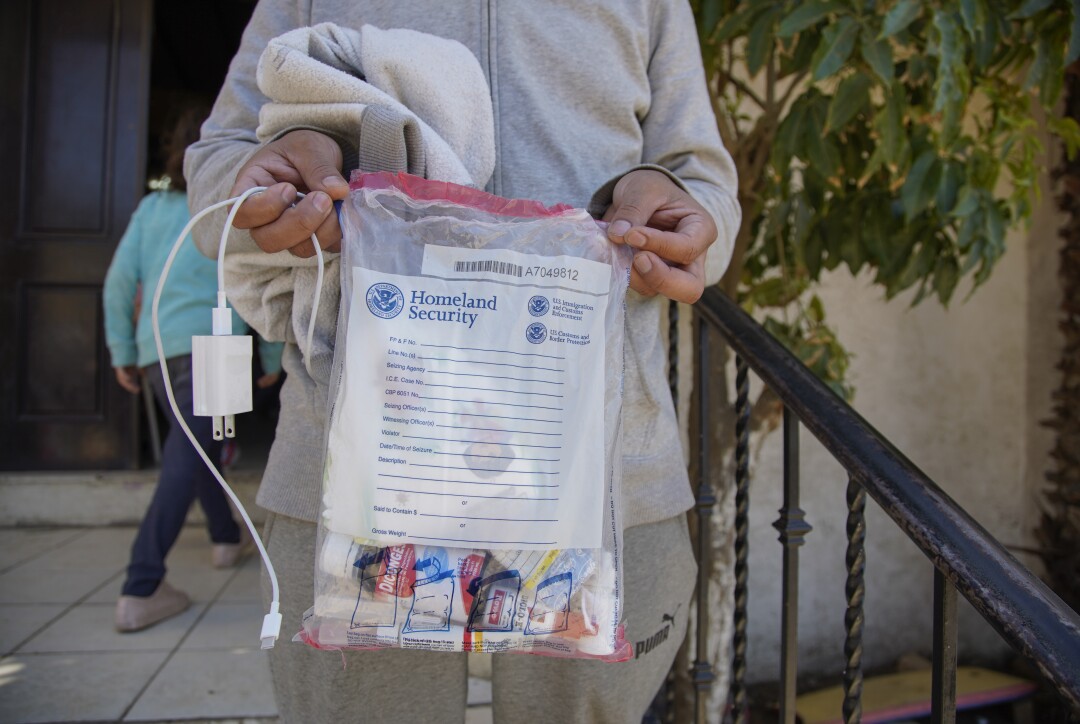
Then they were told that they were getting on a flight to a shelter in San Diego that would speed up the process to reunite them with their loved ones, they said.
Once they landed at the San Diego airport, they were put onto buses that went straight to the Otay Mesa Port of Entry, where Mexican immigration officials received them.
They were given 30-day permits to stay in Mexico and told that after that they will have to go back to the countries that they fled. Then they were put in vans to go to the shelter.
On Thursday, adults and children alike walked around the shelter with the loose tongues of their sneakers flopping because they still hadn’t been able to replace the laces that were taken from them in Texas. One girl had used the ties from a surgical mask to hold her shoes together.
“They sent us here with nothing, and we don’t know anything here,” one Guatemalan woman said. “They’re doing whatever they want with people.”
Who ends up expelled and who gets released seems to be entirely a matter of chance.
The Guatemalan woman, who asked not to be identified because of her vulnerable situation, said she is in contact with a friend who was supposed to board the plane with her, but there weren’t enough seats on the flight. The friend ended up getting released to family in the United States, she said. Meanwhile, the woman and her child ended up on the first bus that pulled away from the plane on Thursday in San Diego, the bus that went straight to the border.
She had wanted to show Border Patrol agents documents about the abuse she faced from her child’s father and to tell them about the corruption and impunity that means men get away with killing women in her country. She wasn’t given any opportunity to do so, she said.
Many others in the group said they had fled a complex web of issues in Honduras, where government corruption, gang violence and economic hardship intertwine and have been exacerbated by the pandemic and two recent hurricanes. One family had pictures from a bloody attack they’d faced there. They, too, just wanted the opportunity to show their evidence and to be screened for asylum.
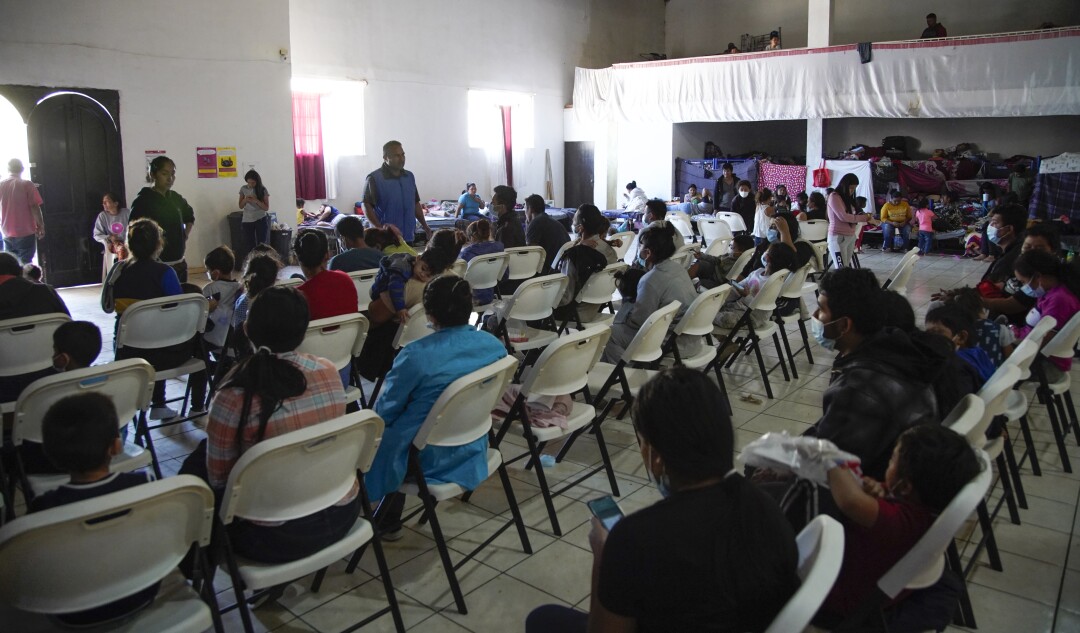
“If things were good in our country, we wouldn’t risk ourselves and our children coming here,” one Honduran mother said.
“Right now in Honduras children are being stolen and sold,” a man added. “What would you do?”
Sarahy, a 35-year-old Honduran woman who asked not to have her full name published because of the danger she is still in, had photographs saved on her phone to show why she left her home suddenly in December.
Honduran soldiers killed her husband and wounded her 14-year-old son in a spray of bullets after her husband witnessed something they did not want him to see. The boy held his breath to look dead so that the men would stop shooting, Sarahy said.
She managed to get her son to a hospital, and as soon as he was released, she fled with him and her 9-year-old. She hoped to reach her stepdaughter in Maryland.
Each time she and her sons tried to cross into Texas, they were immediately expelled to the Mexican city just south of where they tried to cross.
After hearing that unaccompanied children were not being expelled, Sarahy made the decision that her teen would cross alone so that he could get the medical care he needed. He still had bullets in him, and he needed psychological support from the trauma, she said. He’s now with her stepdaughter.
The pain of the separation affects them both.
“He says he feels alone,” she said. “He says, ‘Mami, I want to be there with you.”
She’s still receiving threats by phone from the people who killed her husband. If she returns, she said they told her, they will kill her, too.

Leave a Reply